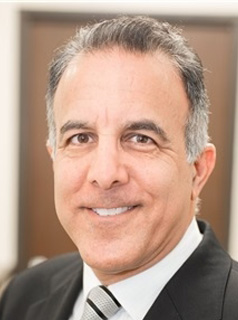What You Need To Know About Erectile Dysfunction (ED)
 Erectile dysfunction (ED) is the occasional failure to achieve or maintain an erection, which is caused by a variety of things, such as fatigue or excessive alcohol intake. ED can have a serious psychological impact for both you and your partner. Those with ED often experience common feelings of lost self-confidence, insecurity, sadness, loss of manhood and shame.
Erectile dysfunction (ED) is the occasional failure to achieve or maintain an erection, which is caused by a variety of things, such as fatigue or excessive alcohol intake. ED can have a serious psychological impact for both you and your partner. Those with ED often experience common feelings of lost self-confidence, insecurity, sadness, loss of manhood and shame.
There is a negative stigma associated with ED, despite the fact that so many men will face it at some point throughout their lives. A 2014 study published in the Journal of Therapeutic Advances in Urology reports, “Erectile dysfunction (ED) today affects over 150 million men worldwide. The recognition of ED in literature dates back to 2000 BC, whereas treatment options were only first introduced in the early 1960s.” This means it’s a disorder which has been dealt with now for thousands of years and still it seems men are unable to talk about it.
With ED, there are problems with the mechanism to engorge the penis with blood, as well as the process to sustain this engorgement. The penis has two chambers known as the corpora cavernosa, and they extend the length of the upper side of the penis. Filling these chambers is a spongy material made of fibrous tissue, spaces, arteries, and veins. An erection begins with sexual stimulation, which produces electrical impulses that run along nerves going directly to the penis. This leads to a release of nitric oxide and increased production of cyclic GMP. These substances cause the corpora cavernosa muscles to relax and let rapid blood flow to the penis. The veins and surrounding structures trap this blood in the corpora cavernosa to sustain an erection (WebMD, 2013).
More Common than You Think
When ED researchers Selvin and associates (2007) assessed the prevalence of this disorder, they found that approximately 19% of men aged 20 years and older reported the problem or roughly 18 million men in the United States alone. The doctors evaluated 2,126 males who participated in the 2001 – 2002 National Health and Nutrition Examination Survey (NHANES) in the U.S. In 2002, researchers Prins and colleagues found that 85% of men 80 years and older had ED.
The Aging of America
Americans are enjoying longevity and better physical health today than in previous decades. In 2010, 40 million people age 65 and older made up 13% of the total U.S. population. That number is expected to grow, too, to 20% by the year 2030. However, with this increased longevity comes an increase in medical issues.
Medical experts Haas and associates (1998) evaluated the modifications in nitric oxide synthesis in relation to age-related ED. This involved the careful analysis of the cavernosal smooth muscle (that tissue inside the penis) and endothelial dysfunction of rabbit subjects. Their data showed that ED in the aging subjects was due to a dysfunction of the endothelial tissue and directly associated with nitric oxide and intracellular calcium fluxes. Basically, this meant that the tissue didn’t respond when the levels were low, and aging subjects experienced this phenomenon.
In human males, vasculogenic ED is caused by an impairment of penile cavernosa smooth muscle relaxation (problems with the penis muscle tissue). Remember, the penile cavernosa is the anatomy component responsible for an erection. Ineffective nitrogen neurotransmission is the underlying problem in neurogenic ED, so as men age, this becomes a problem. In contrast to vasculogenic ED, neurogenic ED is caused by endothelial damage and loss of smooth muscle cells (Gonzalez-Cadavid & Rajfer, 2004).
Your Aging Heart
With advancing age, your heart rate slows and your heart size grows. The blood vessels and arteries get stiff, and your heart must work harder to force blood through. Cardiovascular disorders and high blood pressure are common among older men, and they are caused by age-related heart and vascular changes (Mayo Clinic, 2013). In 2005, ED researchers Thompson and associates studied the association of ED and developing cardiovascular disease and found that ED was an indication of cardiovascular disorders. So, if you have ED, there is a good chance you could have heart problems.
Causes of Erectile Dysfunction
For most men, ED is simply caused by age. While it isn’t only older men who experience erectile dysfunction, the risk increases after 40. More than 50% of men over 40 will experience ED, with the risk rising in your 50’s, 60’s and 70’s. It can also be caused by lifestyle factors, such as smoking, drinking and recreational drug use, by health factors, such as diabetes or cancer, and by mental health issues. Mayo Clinic explains, Male sexual arousal is a complex process that involves the brain, hormones, emotions, nerves, muscles and blood vessels. Erectile dysfunction can result from a problem with any of these. Likewise, stress and mental health concerns can cause or worsen erectile dysfunction.”
Erections have very much to do with the blood flow to the penis, and if this becomes blocked due to clots, low blood pressure, or high cholesterol, you are more likely to experience ED. Parkinson’s disease, Peyronie’s disease, and Multiple Sclerosis also create a higher risk of erectile dysfunction.
ED is not only a physical ailment, but an emotional and mental one as well. Men who experience depression, anxiety, and high levels of stress at work and at home, may not be able to focus or relax enough to enjoy sex or feel sexually stimulated. Sometimes the pressure of trying to achieve an erection after experiencing ED is enough to cause impotence.
To achieve an erection, your nerves must function properly, and your circulatory system must provide adequate blood flow to the organs and body tissues. Additionally, a stimulus from the brain jump-starts the whole process. ED is thought to be a problem of both physical and psychological inadequacy. Common factors that contribute to ED include:
• Physical Illnesses – Diseases and disorders that affect the flow of blood in the penis include hypertension, diabetes, high cholesterol, and cardiac disease.
• Psychological Conditions – ED is related to excess stress, financial problems, work concerns and relationship difficulties. Many who suffer with depression and anxiety also experience impotence.
• Combination Factors – Many experts believe that ED is related to both physical afflictions and psychological factors.
• Medications – Some medications cause ED.
• Performance Anxiety - For men with ED, anxiety occurs when you do not get an erection fast enough or when you feel that the erection is not firm enough. A vicious cycle develops causing performance anxiety, and you may have repeated episodes of impotence.
• Unknown – The cause of ED is still under investigation, and many ED researchers believe there is an underlying vascular problem associated with the condition.(Lewis, et al. 2004)
Risk Factors of Erectile Dysfunction
ED researcher Corona (2004) studied the relational, organic, and intrapsychic elements of ED and how these elements related to age. A structured interview design called SIEDY enabled him to evaluate almost 1,000 men with ED to learn about the contributing factors of the disorder. Older men had lower cavernosal velocity on ultrasound penile examination. This meant there was a reduction of the tissue that holds blood in the penis during erections. Also, participants with low sex drives had lower testosterone levels compared to those with normal sexual desire. Many studies suggest that ED is not just a psychogenic condition, but a physical problem, as well (Sullivan, Keoghane, & Miller, 2001).
There are risk factors you can change, and there are risk factors that you cannot change. The World Health Organization (WHO) determined several risk factors for ED. These include:
• Prescription Medications – A recent study found a relationship between ED and vasodilators, antihyertensives, cardiac medicines, anticholinergics, cytotoxics, hormones, histamine-2 receptor antagonists, and hyperglycemic agents.
• Lifestyle – Lifestyle related risks include use and abuse of alcohol, street drugs, and tobacco.
• Heart Disease – For men with cardiovascular disease, the probability of ED is around 50% for smokers and 20% for nonsmokers.
• Advancing Age – Age is directly connected to ED.
• Chronic Diseases – Diabetes, cardiac disease, hypertension, and hyperlipidemia all increase the risk for ED. Other diseases associated with the problem are Alzheimer’s, Arnold-Chiari syndrome, multiple sclerosis, Peyronie’s disease, scleroderma, chronic renal failure, liver disease, and chronic lung conditions.
• Obesity and Being Overweight – ED is decreased with weight loss and by changing your lifestyle from sedentary to active.
• Injuries – ED results from any trauma to the nerves that facilitate erection.
• Psychological Conditions – Excessive stress, depression and anxiety all can lead to ED.
• Prolonged Bicycling – Some researchers believe that this compresses necessary erectile nerves and affects the blood flow to the penis.
(Derby, 2000; Lewis, 2001)
Treatment for Erectile Dysfunction
Fortunately, ED is very treatable through oral medication, therapy, and in extreme cases, vacuum devices and penile injections or prosthesis. The most common treatment for ED is in the form of medication, such as Avanafil, Sildenafil, Tadalafil, and Vardenafil. This medications work by relaxing the body and improving blood flow so that an erection is possible. They’re known by the brand names Stendra, Viagra, Cialis, and Levitra.
There are some differences between the medications available, including how you take them, how long they take to work, and the duration of their effectiveness. Your doctor may not prescribe you oral medication if you have a history of heart disease, kidney disease or diabetes. Men with high blood pressure shouldn’t take oral erectile medications and may be directed in a different direction for treatment.
In some cases treating ED may be as simple as changing a medication you’re already on. Some medicine lowers libido and prevents erection, so if you’re already taking a prescription for something your doctor might be able to treat your ED by treating the other medical issues in your life first.
To seek treatment for ED, see your family doctor. If your doctor is unable to refill a prescription due to a leave of absence, you can speak to a doctor for a new prescription.
• Oral Medications – Your doctor can change your medication if it causes ED. Also, Viagra, Cialsis, and Levitra work for many with this condition.
• Sex Therapy – Counseling helps many with ED.
• Penile Injections – CaverjectTM and EdexTM cause erection when injected into the side of the penis.
• Vacuum Pumps – External vacuum devices create blood flow to the penis so it remains erect.
• Surgery – Vascular reconstructive surgery enhances the blood supply of the penis.
(WebMD, 2013)
It’s in Your Genes
While many medications and androgen replacement appear to somewhat treat this condition, gene researchers are investigating gene transfer. Gene therapy to the penile corpora cavernosa improved ED in aging rat subjects with the condition. In 2012, genetic researchers Lopushnyan & Chitaley conducted a comprehensive literature review of the gene predictors of ED. While most research has involved the study of the genetic pathways mediating erection, new reports compared the frequency of predetermined genetic polymorphism in men with ED to that of those with few genes persistently replicated. Furthermore, the Journal of Radiation Onocology recently announced 12 genetic markers that were associated with male sexual dysfunction. The scientists of the Mount Sinai School of Medicine found these markers after testing hundreds of subjects who had undergone radiotherapy for prostate cancer. The aim of this research is to help doctors predict when men may develop ED from radiotherapy (Gonzalez-Cadavid & Rajfer; Lippi et al., 2012).
Promising Topical Treatment in the Works
In 2009, the Makefield Therapeutics Company developed Hybrid Nanoparticle technology that delivers nitric oxide locally to the penile tissue for treating ED. This topical hydrogel contains saline nanoparticles the release nitric oxide slowly. The treatment creates a vasodilating effect making it ideal for ED therapy. This treatment option would allow you to avoid those uncomfortable side effects associated with the current oral drugs. The Makefield group plans to advance the research of this product in clinical trials (Potera, 2010).
References
Braun, M., Wassmer, G., Klotz, T., Reifenrath, B., Mathers, M., & Englemann, U. (2000). Epidemiology of erectile dysfunction: results of the ‘Cologne Male Survey’. International Journal of Impotence Research, 12(6): 305 – 311. DOI: 10.1038/sj.ijir.3900622
Cohan, P. & Korenman, S.G. (2001). Erectile dysfunction. The Journal of Clinical Endocrinology and Metabolism 86(6): 2391 – 2394. doi: 10.1210/jc.86.6.2391
Derby, C.A. et al. (2000). Modifiable risk factors and erectile dysfunction: Can lifestyle changes modify risk? Adult Urology, 56(2), 302 – 306.
Feldman, H.A., et al. (2000). Erectile dysfunction and coronary risk factors. Preventive Medicine, 30(4): 328 0 338. DOI: 10.1006/pmed.2000.064
Gonzalez-Cadavid, N.F. & Rajfer, J. (2004). Molecular pathophysiology and gene therapy of aging related erectile dysfunction. Experimental Gerontology, 39(11 – 12): 1705 – 1712.
Doi: http://dx.doi.org/10.1016/j.exger.2004.06.022
Haas, C.A., Seftel, A.D., Razmjouei, K., Ganz, M.B., & Hampel, M. (1998). Erectile dysfunction in aging: upregulation of endothelial nitric oxide synthase. Urology, 51(3): 516 – 522.
Kubin, M., Wagner, G., & Fugi-Meyer, R. (2003). Epidemiology of erectile dysfunction. International Journal of Impotence Research, 15, 63 – 71. doi:10.1038/sj.ijir.3900949
Lewis, R.W. (2001). Epidemiology of erectile dysfunction. Urologic Clinics of North America, 23(2).
DOI: 10.1016/S0094-0143%2805%2970132-4
Lewis, R.W. et al. (2004). Epidemiology/risk factors of sexual dysfunction. The Journal of Sexual Medicine,
1 (1): 35 – 39. DOI: 10.1111/j.1743-6109.2004.10106.x
Lippi, G., Plebani, M., Montagnana, M., & Cervelin, G. (2012). Biochemical and genetic marker of erectile dysfunction. Advances in Clinical Chemistry, 57: 139 – 162.
Lopushnyan, N.A. & Chitaley, K. (2012). Genetics of erectile dysfunction. The Journal of Urology, 188(5): 1676 – 1683. http://dx.doi.org/10.1016/j.juro.2012.07.008
Mayo Clinic (2013). Aging – what to expect. Retrieved on February 13, 2013 from:
http://www.mayoclinic.com/health/aging/HA00040
National Institute on Aging (2012). Older Americans 2012. Retrieved from: http://www.nia.nih.gov/
Potera, C. (2010). Nanoparticles Deliver Nitric Oxide Locally: Technology from Albert Einstein Medical School Being Developed by Makefield Therapeutics. Genetic Engineering & Biotechnology News, 30(14).
Prins, J., Blanker, M.H., Bohnene, A.M., et al. (2002). Prevalence of erectile dyfunction. International Journal of Impotence Research, 14: 422 – 432. doi:10.1038/sj.ijir.3900905
Selvin, E., Burnett, A.L., & Platz, E.A. (2007). Prevalence and risk factors for erectile dysfunction in the U.S. The American Journal of Medicine, 120(2): 151 – 157. DOI: 10.1016/j.amjmed.2006.06.010
Sullivan, M.E.,Keoghane, S.R., Miller, M.A (2001). Vascular risk factors and erectile dysfunction. BJU International, 87 (9): 838 – 845. DOI: 10.1046/j.1464-410x.2001.02211.x
WebMD (2013). Erectile dysfunction. Retrieved from:
http://www.webmd.com/erectile-dysfunction/guide/erectile-dysfunction-basics

WARNING: Limitations of Online Doctor/Medical Consultations and Online Prescriptions, QuickRxRefills Cannot and Will NOT Prescribe, Dispense, or Resell any and all medications Narcotics/Controlled Substances (this policy is fully enforced by the Drug Enforcement Administration (DEA)) for Anti-depressants, Pain, Anxiety, Weightloss, Sleep, ADHD/ADD, Anabolic Steroids, Testosterone Replacement Therapy and any and all Medications that contain GabaPentin or Pseudroephedrine including non-controlled substances or any medications that are considered controversial, Off Labeled (Growth Hormone aka HGH) or recalled in nature such (i.e. Retin-A, Accutane). Furthermore, QuickRxRefills is not a substitute for an office based physician in your location nor is it a substitute for Emergency Medical Care or 911. If you do experience a "true" medical emergency your are encouraged to pick up the phone and dial 911 as soon as possible.






